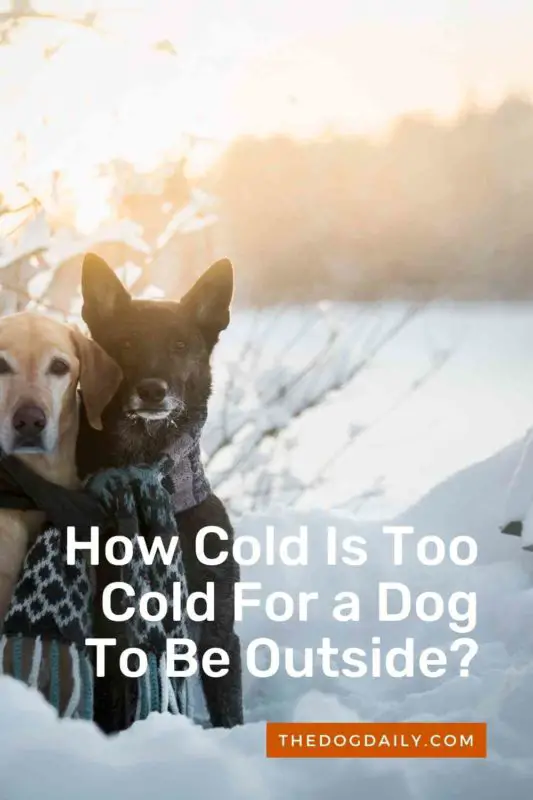Can Dogs Handle Cold Weather?
Upstate New York is not known for having mild winters. The period from November through March brings several feet of snow to the area, and temperatures can drop below zero. Such conditions don’t bother Vernon, N.Y. veterinarian Deb Eldredge and her canine companions, though. “My dogs do fine running outside for short periods even when it’s below zero,” says Dr. Eldredge. “And they love to go cross-country skiing with me.”
But even winter-loving dogs need extra protection from the elements. Here’s what Dr. Eldredge and other experts suggest you should do — and not do — to keep your dog warm and healthy this winter.
Does My Dog Need a Winter Coat?
Although almost all dogs come with fur coats, those coats may not be enough to protect some breeds from the effects of wind, precipitation, and low temperatures. For these dogs, a winter dog coat may be necessary. “Think of the very short-coated dogs, especially those with low body fat, such as Whippets and Greyhounds,” says Dr. Eldredge, co-author of Dog Owner’s Home Veterinary Handbook (Wiley, 2007). “And many toy breeds have such a close body-surface-to-weight ratio that they can be chilled easily as well.” If you decide to get a coat for your dog, be sure to follow the manufacturer’s instructions to determine what size to purchase.
Our Dog Winter Coat Recommendations
Does My Dog Need Shoes?
Dogs do get cold feet, but many won’t tolerate wearing winter dog shoes to keep their paws warm. If you want your dog to accept footwear, Dr. Eldredge recommends using positive training techniques. “Put one bootie on, give a treat, then take it off,” she suggests. Repeat that for a couple of days, and then try putting booties on two paws, three paws, and, finally, all four paws.
Our Dog Winter Shoe Recommendations
Ramp Up Grooming Your Dog
Keeping your dog’s coat well brushed and paw fur trimmed can make a big difference during winter. “Dogs whose coats get matted will have a harder time drying out after being out in the snow and cold rain,” explains Dr. Eldredge. “And we trim our dogs’ feet, which may make them get cold a bit faster, but it reduces the amount of ice, snow, and mud caught in the pad hair.”
Watch For Frostbite
Human beings aren’t the only individuals who can get frostbite; dogs also can get it. “The most common areas for frostbite are the ear tips, tail tips — especially if the tail is relatively hairless — and toes,” says Dr. Eldredge. “The affected area will feel cold, may look white when you check the skin and eventually will feel hard and dry. If you suspect frostbite, you need to contact your veterinarian right away.”
Don’t Change Your Dogs Diet
Contrary to popular opinion, “the average dog does not need a diet change for winter,” says Dr. Eldredge. “They aren’t outside that much.” Exceptions would be working sled dogs, which need to eat more food during the winter. Other dogs should stay on their regular regimens so that they don’t gain weight.
How Cold Is Too Cold For a Dog To Be Outside?
It may be too cold for your dog to be outside when the temperature falls below 45 degrees Fahrenheit. At this temperature, your dog may start to feel cold. At around 30 degrees Fahrenheit, more susceptible dogs such as puppies, seniors, or small breeds will need protection from the cold.
When the outside temperature is bone-chilling, it’s prudent to play indoor games with your dog to give it the mental and physical workout it needs. Experts suggest basic games like fetch and tug-of-war for physical exercise, and activities like hide-and-seek and find-the-toy to offer mental challenges.
Don’t Skimp Too Much On Heat
Exemplary energy conservation demands that we turn down our thermostats when we’re not at home during the winter. But don’t turn it down so low that your home-alone dog starts to shiver. Keeping the thermostat at around 65 degrees Fahrenheit will keep your dog comfortable while still holding down your heating bills. For arthritic and older dogs, consider purchasing a heated dog bed. Such beds can bring warmth and comfort while also helping to ease stiff joints.
Use Common Sense
Unless your dog pulls a sled during the winter, it doesn’t need to spend a lot of time outdoors. A good rule to follow is if you’re bundled up against the elements and starting to feel uncomfortably cold, your dog probably feels that way.
Winter Dog Safety Check List
Everyone’s heard of spring cleaning, changing the fire alarm batteries, and getting ready for a new season. However, the winter months pose unique indoor dangers for dogs too. For example, did you know fleas can live all winter indoors long?
Here are a few things all dog parents should do to keep their dogs safe and sound in the colder months.
Heating Safety Check for Dogs
As the temperatures drop, the thermostat rises indoors. The usage of an electric heater or fireplace should be done with caution. Tails, fur, and paws that come too close to flames, hot surfaces, or the coils of an electric heater can be damaged, and a curious pet could knock over an unattended heater. To make sure your dog is warm indoors and that fire hazards are diminished, never leave a heater on without someone in attendance.
Keep Checking for Fleas
Contrary to widely held belief, fleas can and do live all winter indoors long. Keep fleas away with proper prevention, check with your dog’s veterinarian for how often, and what to use to treat your dog.
Wires and Other Hazards for Dogs
Some dogs love to chew on electrical wires. As the holidays have passed, now is an excellent time to assess any exposed wires and cords that are risky or any other access that dogs may have to electrical shock. Cover cords with plastic sleeves, unplug cables when not in use where applicable, and check around the house for any balls or toys that might be close (or stuck) to electrical sources.
Check Your Dogs Bedding Position
A dog’s bed, kennel, or “comfy spot” should be kept away from any drafty areas; even though dogs have a fur coat, cold can, affect them. If you feel a draft or cold, then chances are your dog is feeling that same cold air. Keep dog beds off of heating vents, but in a spot that keeps them warm and secure.
Check Your Dogs Paws
What dogs walk on outside is often brought inside with them. With winter sidewalks being laden with rock salt, chemicals, and other debris, it’s essential to protect a dog’s paws outside, and then keep them clean inside. Ice can burn and damage a dog’s sensitive paws, so using dog booties or a food-grade pet-safe wax can help prevent problems. Wash dog paws (and tummies) with warm, clean water before coming in the house after a winter walk.
Antifreeze is Hazardous for Dogs
If dogs have access to the family garage, take a check for any antifreeze containers. Clean up any spills, do not allow pets to have access to any poisonous containers, and do not let pets to lick or step in any puddles near cars while out on walks.
Puppy Safety Check
If a new puppy has graced your life, a whole extra set of puppy-proofing precautions apply to new dog parents. Everything from cabinets that need to be locked and toilets that need lids down to plants need to be kept from prying paws.
Carbon Monoxide Dangers for Dogs
Just like people, pets can be overcome with carbon monoxide. Have a furnace check—both odorless and invisible, carbon monoxide poisoning is always a danger year-round.
Dog Indoor Plumbing
Finally, some dogs are opposed to doing their duties outside when there is cold weather and/or snow on the ground. Shovel a nice little path for dogs to do their outdoor business and never punish a dog for relieving himself inside.
Use this list, and both you and your dog will appreciate the extra precaution and safety this season.
Article written by Author: Carol Bryant and Susan McCullough

